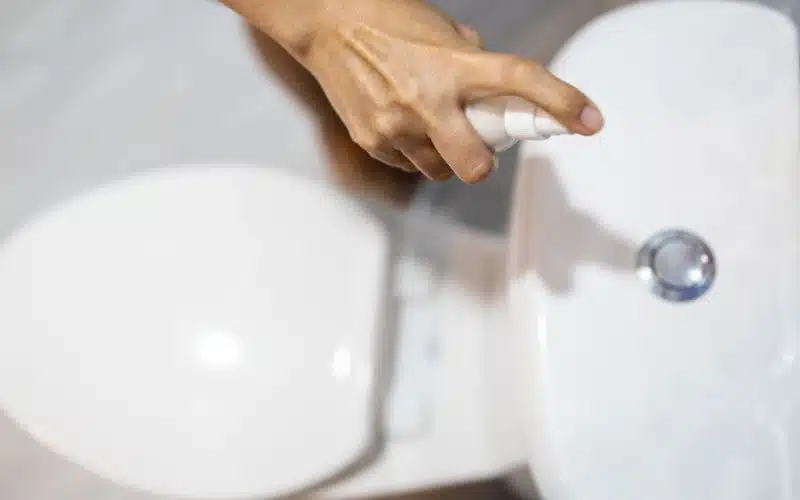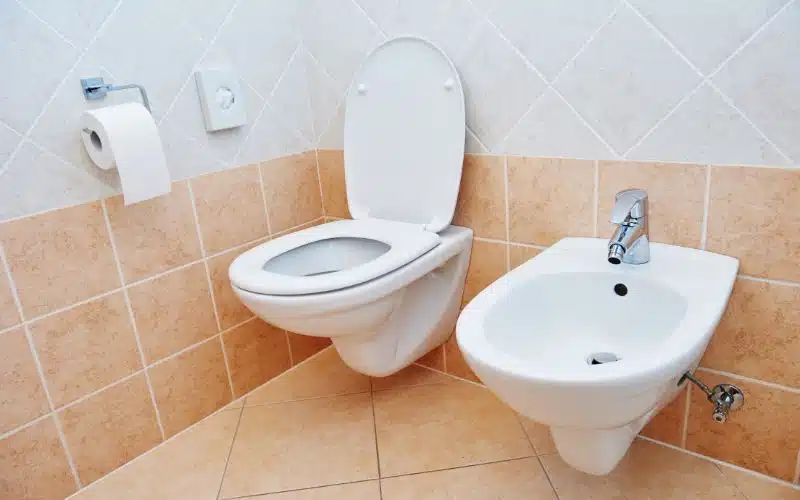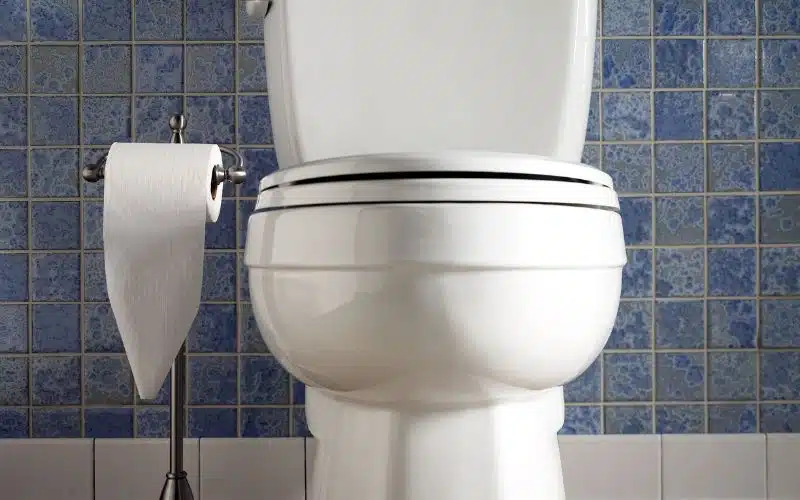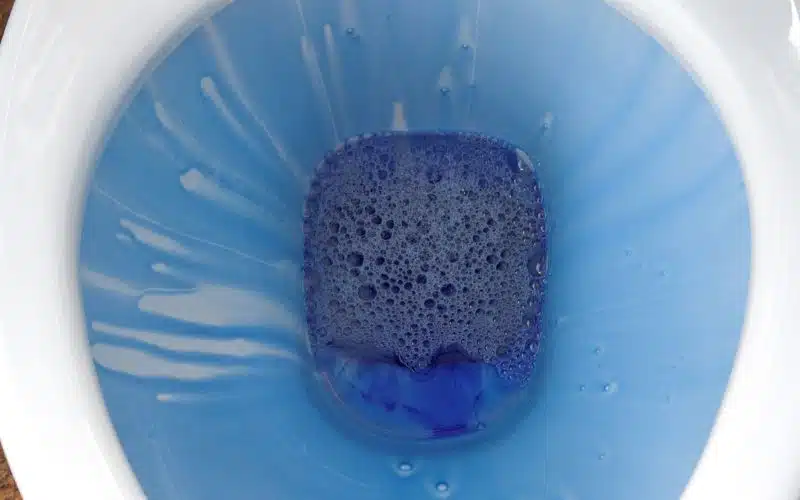It’s frustrating when you’re using the toilet and the seat keeps falling off. Sometimes, fixing this issue requires tightening the seat’s bolt.
However, this problem might have other causes. This article will guide you on how to fix a toilet seat that keeps dropping.
With a screwdriver, you can fix a seat that keeps falling off by tightening the bolts on its hinges. Two bolts drive into the porcelain toilet bowl. Reseat the toilet seat to align properly with the bowl before securing the bolts.
Why Does My Toilet Seat Keep Falling Off?
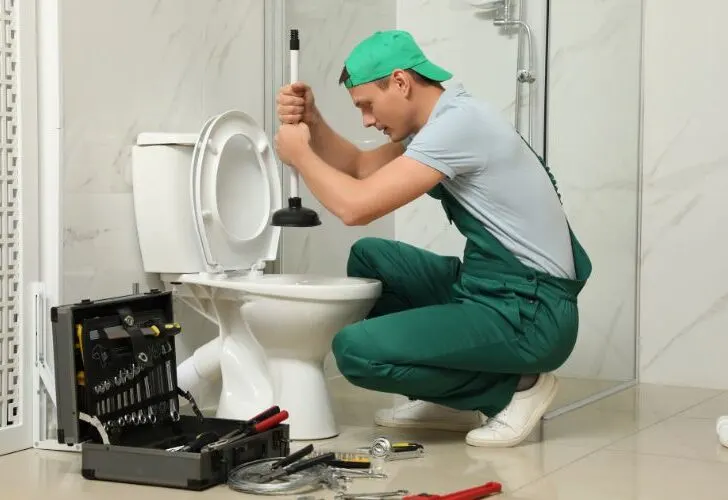
Your toilet seat keeps falling because of improper seat installation, an uneven toilet bowl, or the lid is too big.
We’ll take a look at these reasons below.
#1. Poor Seat Installation
Most toilet seats fall off because of poor installation. When installing toilet seats, the seat’s angle relative to the toilet bowl must be above 90°.
At this angle, the seat will comfortably lie against the bowl. When the angle fails to be above 90°, the seat will always slide off the bowl.
#2. Uneven Toilet Bowl
Your toilet seat might be falling off because the toilet’s shape isn’t flat. You can check this using a level.
Close the toilet lid, grab the level and place it on the toilet lid and see the result. You’ll need toilet shims or wedges if the toilet bowl slopes forward.
#3. Bulky Toilet Lid
If your toilet seat and lid combine too bulky, your toilet seat might fall off. In this situation, the angle of the toilet seat might be less than 90°.
One of the reasons this will happen is when you have a shag toilet cover. If you don’t have this type of cover, you might need a thinner lid.
How Do You Fix a Toilet Seat That Keeps Falling?
Most times, you can fix a falling toilet seat by tightening the screws. The reasons below can be why your toilet seat is falling off, and you can fix them in the following ways.
| Reasons For Falling Off | How to Fix |
|---|---|
| Poor seat installation. | Unscrew the lid and move the seat. |
| Uneven toilet bowl. | Install toilet shims or wedges. |
| Bulky toilet lid. | Replace toilet lid. |
Let’s take a deeper look at the solutions below.
#1. Adjust the Lid
Depending on the design, the toilet lid and seat attach two or more bolts to the bowl. Sometimes, the toilet seat has poor installation, which will cause it to fall off.
What you need to do in this situation is to unscrew the lid. Ensure you wear hand gloves to protect yourself from germs.
Pull up the cover; if there’s any to reach the bolts, unscrew them on either side of the bowl.
Once the bolts are out, drag the seat forward to its limit to have the additional angle it needs to prevent falling.
Put the bolts and screw them into the bowl, then check if the seat stays. If this solution doesn’t work, your toilet might have a different issue and needs a different solution.
#2. Install Toilet Shims Or Wedges
Toilet shims are slender rubber or plastic tabs for toilets that aren’t even. Toilets shims will slip beneath the toilet base to raise and level it.
Before installing shims, ensure that the toilet isn’t leaking. A broken wax ring will leak water under the toilet base.
This leak means the wax ring needs replacing before shimming takes place. Place a level on the bowl to determine where the toilet slants.
When you’ve discovered the place, you can slip the shims beneath the toilet base of that slanting area. After fixing the shims, test the toilet seat to see if it falls again.
#3. Replace the Toilet Lid
When the toilet lid is too bulky, it might upset the angle needed for the toilet seat to stay.
In this situation, you’ll have to get a new lid corresponding to your toilet seat. Other times, you might have a shag toilet cover on your seat.
This cover might be what’s causing the toilet seat to fall off. Simply taking off the cover might solve the problem.
You can try loosening the bolts of the lid and pushing it back before buying a new one. This little movement can be alright to maintain the toilet seat’s position.
How Do You Fix a Toilet Seat Hinge?
The hinges of toilet seats are made of two materials, plastic and metal. Plastic hinges come formed in a single-piece model that joins the lid and seat.
This economical design makes it a bit difficult to repair since the whole cover and seat unit will need replacing.
In contrast, metal hinges have a complex assembly of parts. The hinges join the cover and seat differently with machine bolts.
A lengthy hinge bar connects the single hinges to facilitate speedy removal and mending of the different hinge units.
The first step to repairing the hinge is to detach the toilet lid and seat from the toilet. You do this by unscrewing the hinge unit’s rear major bolts.
The hinge’s screws are on the bowl’s underside. After unscrewing the major bolts, you can lift the lid-seat assembly from the bowl.
Place the lid-seat assembly against a flat area and unscrew the bolts (usually four) from the broken hinge unit.
With the broken hinge out now, find the main hinge bar joining the four units of hinges. The hinge bar is spherical and about ¼ of an inch in length.
Place the lean end of a nail set to the hinge bar’s middle. Use a hammer to hit the nail set to remove the hinge unit.
Get a plier, hold an end of the hinge bar, and tug it out from the hinge units. You can remove only the broken hinge and leave the hinge bar.
Tug on the hinge bar till the broken hinge is accessible. If a hinge isn’t coming out, you can smear some wax on the hinge bar to loosen it.
Take the damaged hinge and apply glue to its broken parts. Hold the broken parts together and wait for them to dry before fixing the hinge on the bar.
If the hinge is beyond repair, replace it and reattach the seat lid on the toilet bowl.
Can a Self-Closing Toilet Seat Be Fixed?
It’s possible to fix the toilet. The seat-lid unit might be closing too quickly or stopped closing at all.
Fixing a self-closing toilet seat requires detaching the seat-lid unit, pulling out the cylinders, and refitting.
Before starting, you’ll need the following protective equipment tools.
- Glove
- Face mask
- Protective goggles
- Alcohol spray
- Screwdriver
- Nut socket spanner
- Waterproof grease
- Wipes
First, put on all protective equipment, then separate the seat-lid unit from the bowl. Find the release control in the hinge area.
This spring action release will allow you to lift the seat-lid unit from the bowl. Press on this control to detach the seat-lid unit.
After detaching, take the set-lid unit out of the restroom. The next step is extricating the lid by operating on the cylinders.
The seat will come off easily with some pressure, and you can work on it. Taking out the cylinders is the next part; turn the seat upside down to operate better.
One cylinder damper on the seat regulates the soft-close movement, and the other regulates the lid.
Open the cylinder damper and use a toilet seat spanner to turn it anti-clockwise. This action will remove the cylinder top from the seat while the nut remains inside the cylinder.
Rub waterproof grease through the cylinder, then reassemble the cylinder properly and wipe down the parts.
The next step is reworking the cylinder through the hinge of the seat. Push in the cylinder damper and lock it in with the hinge. You can use alcohol spray to wipe the toilet’s rim before fixing the bowl’s seat lid.
Attach the lid to the seat and lock it with the toilet bowl. Examine if the spring action controls are operating on either cylinder.
How Do You Glue a Toilet Seat?
Gluing a toilet seat depends on the material of your seat. Get good epoxy glue and remove the seat-lid unit from the toilet bowl for a plastic seat.
Apply the glue on both sides of the cracked area. Hold the seat together till it joins together.
You can perform this at night so that the glue can dry overnight. Note that gluing this seat will not make it last longer. The crack can still succumb to weight and come apart again.
For wooden seats, unscrew the seat-lid unit from the bowl. Get wood glue that has a nozzle designed with the container. Spread the glue in the crack and push the seat so the crack can glue.
You can replace the seat regularly to prevent the toilet seat from cracking. Toilet seats can last between five to seven years; you can replace them three times.
Conclusion
Your toilet seat keeps falling because of wrong seat installation, an uneven toilet bowl, or the lid being too dense.
You can fix a seat that keeps dropping by adjusting the lid, installing toilet wedges, and replacing the lid. Fixing a self-closing toilet requires greasing the cylinders.
